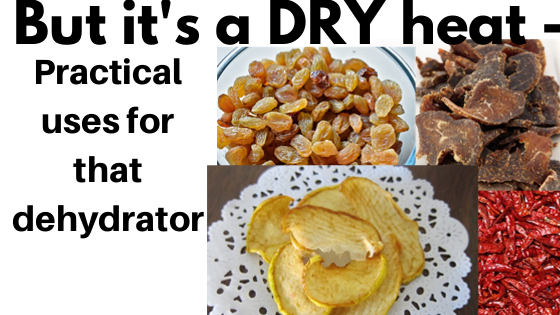Do you have a dehydrator tucked away somewhere in your house? Do you sometimes wonder if you should get one but worry it will collect dust? First, you don’t have to buy one if you’re handy. Some people are able to make them. And if you already have a solar oven you might be able to use IT as a dehydrator. So however you end up with one, let’s take a look at this surprisingly versatile tool.
This post may contains affiliate links, which means that if you click on one of the product links, I might benefit in some way. Please feel free to check out the full affiliate statement and disclosure here.
A dehydrator uses low temperatures and circulating air to dry foods. This method of cooking foods keeps the vitamins and minerals at optimum levels, but removes all of the moisture. Most dehydrators use electricity to dry foods. Others use trays placed in the sun. This method requires less energy but takes longer to dehydrate. Many people make use of dehydration to preserve their summer harvest of fruits and vegetables.
Get this free printable Guide to Dehydrating Fruits and Vegetables. You can rehydrate veggies in soups and stews and the fruits are great in desserts or for snacks.
Those eating a raw food diet can use dehydrators to help give their foods different tastes and textures while still keeping the food “living,” full of those vitamins, minerals, and even enzymes that are lost during cooking. Most people consider foods raw if they do not reach “cooking” temperatures above 115 degrees. Some foods will take longer to dehydrate at this lower temperature. Some of the items that can be cooked for raw food diets in the dehydrator include kale chips and even crackers and cookies.
Some dehydrators can reach almost 200 degrees. This has given me a great hot weather option for cooking some items outside of the oven and not heating up my kitchen as much, most notably breakfast cereal and granola. Being able to “bake” cookies during hot months has also been a nice surprise. To keep the house from getting too hot I might turn the dehydrator on at night only. This also helps if your model generates some noise. Because it dries out foods slowly, cooking times can be flexible so you don’t have keep a super close eye on the food.
Other interesting uses for a dehydrator include
- as a yogurt maker (set shallow dishes on the trays)
- crisping up stale crackers
- making alternative flours, such as sweet potato flour or coconut flour
- as a humidifier
Let’s take a fresh look at what is commonly made in the dehydrator. Of course put your own spin on these ideas!
- fruit rolls
- crackers
- kale chips. They’ve gained popularity recently and are MUCH cheaper homemade.
- Other veggie chips. Get ready for summer squash chips, sweet potato chips, butternut squash chips, and beet chips.
- Fruit chips. Think apple, banana, or pear chips
- Other dried fruit, including cherries, grapes/raisins, strawberries, cranberries, pineapple, mango, papaya and more.
- meat jerky. Organ meat jerky, if you dare!
- salmon jerky
- macaroons
- preserving vegetables, as well as HERBS and even EGGS
- drying out nuts and sees that have been sprouted or soaked to make them more digestible
- drying out soaked or sprouted rice, wheat or other grains
- drying out yogurt into “yogurt leather,” in order to store or make a portable probiotic snack
While I have enjoyed my dehydrator for many of the more basic, commonly known foods, I’m continually surprised by how ELSE you can use a dehydrator. Pull yours out and see how you might surprise your family and yourself. And feel free to share your success with me!


One comment